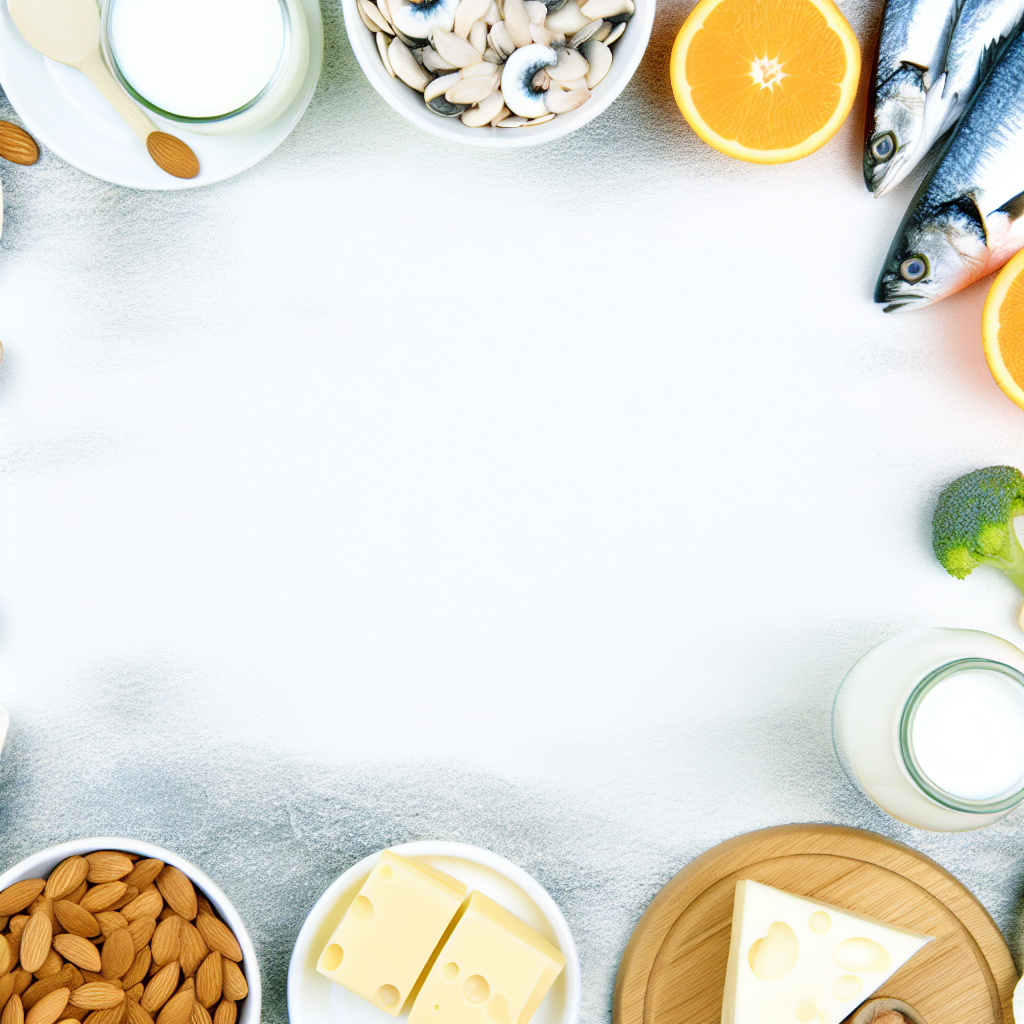Vitamin D, known as the "sunshine vitamin," is vital for strong bones, a healthy immune system, and maintaining your energy levels. Yet, surprisingly, many people worldwide struggle to meet their daily vitamin D needs due to limited sunlight, indoor lifestyles, or dietary gaps. This deficiency can lead to fatigue, bone weakness, and even changes in mood.
Fortunately, your diet can help fill the gap. By incorporating natural and fortified vitamin D-rich foods into your meals, you can support your health and wellbeing effectively. Whether you're dealing with a deficiency or simply looking for ways to boost your vitamin levels naturally, this guide has you covered.
What Makes Vitamin D So Important?
Vitamin D plays a critical role in your body, helping regulate calcium and phosphorus levels for strong bones and teeth. But its benefits don’t stop there. The "sunshine vitamin" also strengthens your immune system, supports muscle function, and helps control inflammation.
Feeling fatigued or noticing that your bones don’t feel as strong? You could be low on vitamin D. This deficiency is more common in individuals who spend most of their time indoors or live in areas with limited sun exposure. Thankfully, making some intentional changes to your diet can help address this issue naturally.
The Best Natural Sources of Vitamin D
Vitamin D occurs naturally in certain foods, especially animal-based products. Here are some of the richest natural sources to include in your diet:
Fatty Fish: Nature’s Vitamin D Powerhouse
Fatty fish like salmon, mackerel, tuna, and sardines are some of the best sources of vitamin D. A single serving of cooked salmon provides 600–700 IU, almost your entire daily requirement. For a delicious option, try baking salmon with olive oil, lemon, and dill—it’s both flavorful and packed with health benefits.
Egg Yolks: Breakfast with Benefits
Egg yolks are another excellent option for vitamin D intake. One large egg yolk supplies about 40 IU. For an even greater boost, select pasture-raised eggs as they tend to have higher nutrient levels. Scrambled eggs, omelets, or a hearty frittata are all smart breakfast choices.
Cod Liver Oil: The Bold Choice
If you’re looking for a super-concentrated source of vitamin D, cod liver oil delivers. Just one tablespoon provides over 1300 IU. While its taste can be strong, it’s a great option for those who prefer capsules or mixing it into smoothies to mask the flavor.
Beef Liver: A Nutrient-Rich Classic
Beef liver may not be a go-to for everyone, but it’s rich in vitamin D, iron, and vitamin A. A cooked three-ounce serving delivers approximately 42 IU. Prepared with onions and spices, it can be a nutritious addition to your diet.
Fortified Foods: Accessible Sources of Vitamin D
If natural sources aren’t enough, fortified foods can make hitting your daily vitamin D goals much easier. Here are some popular choices:
Fortified Milk
Dairy milk is often fortified with vitamin D, supplying about 100 IU per cup. Plant-based alternatives like almond, soy, or oat milk are also fortified, making them suitable for vegans and those with lactose intolerance. Pair fortified milk with cereal for an easy breakfast boost.
Fortified Cereals
Many breakfast cereals are enriched with vitamin D, adding 40–100 IU per serving. Look for whole-grain cereal options with little added sugar, and pair them with fortified milk for a double dose of vitamin D.
Fortified Orange Juice
A refreshing cup of fortified orange juice provides 100 IU, making it a quick and convenient way to add vitamin D to your day. Drink it alongside eggs or other vitamin D-rich options for a balanced meal.
Fortified Yogurt
Certain brands of yogurt offer enriched amounts of vitamin D, packing 80–120 IU per serving. Combine yogurt with granola, fresh fruit, or nuts for a satisfying snack that supports bone health and immunity.
Tips to Maximize Vitamin D Absorption
A few tricks can help you get the most out of your vitamin D-rich foods:
- Pair with Healthy Fats: Vitamin D is fat-soluble, meaning your body absorbs it better when eaten alongside healthy fats like avocado, nuts, or olive oil.
- Be Mindful of Cooking: Overcooking foods can reduce their nutritional value, so try baking, steaming, or poaching to retain vitamin D.
- Combine Sunshine and Food: Pair vitamin D-rich meals (like a tuna salad) with outdoor activities to leverage the benefits of sunlight exposure.
Special Dietary Considerations
Dietary restrictions don’t have to stand in the way of boosting your vitamin D intake. These alternative strategies can help:
For Vegetarians and Vegans
Natural sources of vitamin D are often animal-based, but fortified options like plant-based milk, cereals, and UV-exposed mushrooms are excellent alternatives for plant-based diets.
For Those with Lactose Intolerance
If dairy isn’t suitable for you, fortified almond, soy, or oat milk provides comparable amounts of vitamin D without compromising your dietary needs.
Budget-Friendly Choices
Canned tuna, eggs, and fortified cereal offer affordable ways to incorporate vitamin D into your diet without breaking the bank.
Conclusion
Vitamin D isn’t just important—it’s critical for keeping your bones, immune system, and energy levels in top shape. Whether you choose natural sources like salmon and egg yolks or opt for fortified options like milk and cereal, there’s no shortage of ways to add this essential nutrient to your meals.
Making small changes, like cooking with fatty fish or swapping regular milk for its fortified counterpart, can lead to noticeable health improvements. If you suspect a deficiency, talk to your doctor about testing and supplementation. Incorporating more vitamin D into your routine is a simple step with big rewards for your overall wellbeing!
